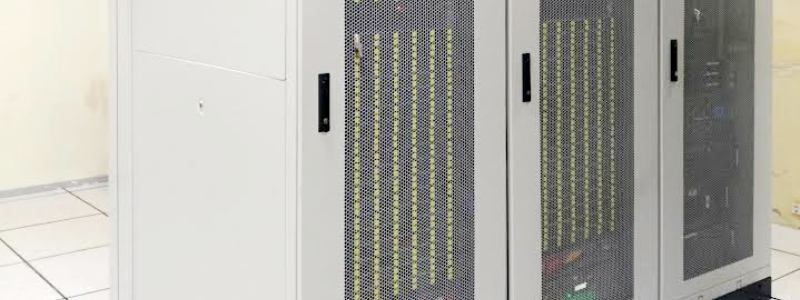

An HPC of 64 new compute nodes, 32 old compute nodes and 01 GPU node with 04 nos. of NVIDIA Tesla K40c has been named KALINGA for the School of Physical Sciences. It has 205 TB of storage with Lustre® Parallel File System and interconnected with 216-Port EDR 100Gb/s Infiniband Smart Director Switch populated with 108 ports.
Old compute nodes: Based on Intel® Xeon® CPU E5-2698 v3 @ 2.30GHz. Two sockets for each node (32-cores per node) with Memory: 512 GB (8 * 64 GB) per node.
New compute nodes: Based on Intel® Xeon® Gold 6248 CPU @ 2.50GHz. Two sockets for each node (40-cores per node) with Memory: 192 GB (12 * 16 GB) per node.
This cluster has been listed in the Jan-2021 top-supercomputer list in India maintained by C-DAC Bangalore. https://topsc.cdacb.in/filterdetailstry?page=30&slug=January2021

New HPC cluster under school of chemical science has been installed and is named as Hartree cluster. Hartree cluster is inside the smart row solution.
SmartRow by itself a mini-datacenter which contains almost all the subsystem of Datacenter.
This cluster has been listed in the July-2018 top-supercomputer list in India maintained by C-DAC Bangalore. https://topsc.cdacb.in/filterdetailstry?page=30&slug=July2018
Subsystems in the SmartRow:
Hartree Cluster:
Hartree cluster is a HPC of 40 compute nodes and 2 master nodes in HA configuration.
It is based on Intel(R) Xeon(R) CPU E5-2697A v4 @ 2.60GHz. Two sockets for each node (32-cores per node) on Supermicro SuperServer SYS-6028R-TR with 64 GB of RAM per node.
HPL Benchmarking Results (for 36 nodes - 1152 cores):
The nodes are connected by Mellanox 108 port FDR chassis switch (MSX6506-NR) that can provide 56Gbps of throughput.
It also has 230 Terabytes of storage in Lustre® Parallel File system with an aggregate performance of around 5GBps on write performance.

The Vikram High-Performance Computing (HPC) Cluster is a modern computational infrastructure deployed at the School of Physical Sciences (SPS), NISER Bhubaneswar. Built with AMD EPYC processors, HDR InfiniBand networking, and a scalable parallel file system, Vikram provides high-throughput computing, low-latency communication, and robust storage capacity for demanding computational workloads.
Vikram HPC is listed rank 60 in Dec 2025 list. https://topsc.cdacb.in/filterdetailstry?page=60&slug=December2025

The Dirac High-Performance Computing (HPC) Cluster is a state-of-the-art computational platform at the School of Chemical Sciences (SCS), NISER Bhubaneswar. Equipped with modern AMD EPYC processors, HDR InfiniBand networking, and a high-performance parallel file system, the Dirac cluster delivers exceptional computing power, ultra-low latency, and scalable storage for advanced scientific computing.
Dirac HPC is listed rank 62 in Dec 2025 list. https://topsc.cdacb.in/filterdetailstry?page=70&slug=December2025
Please Do
Please Don't